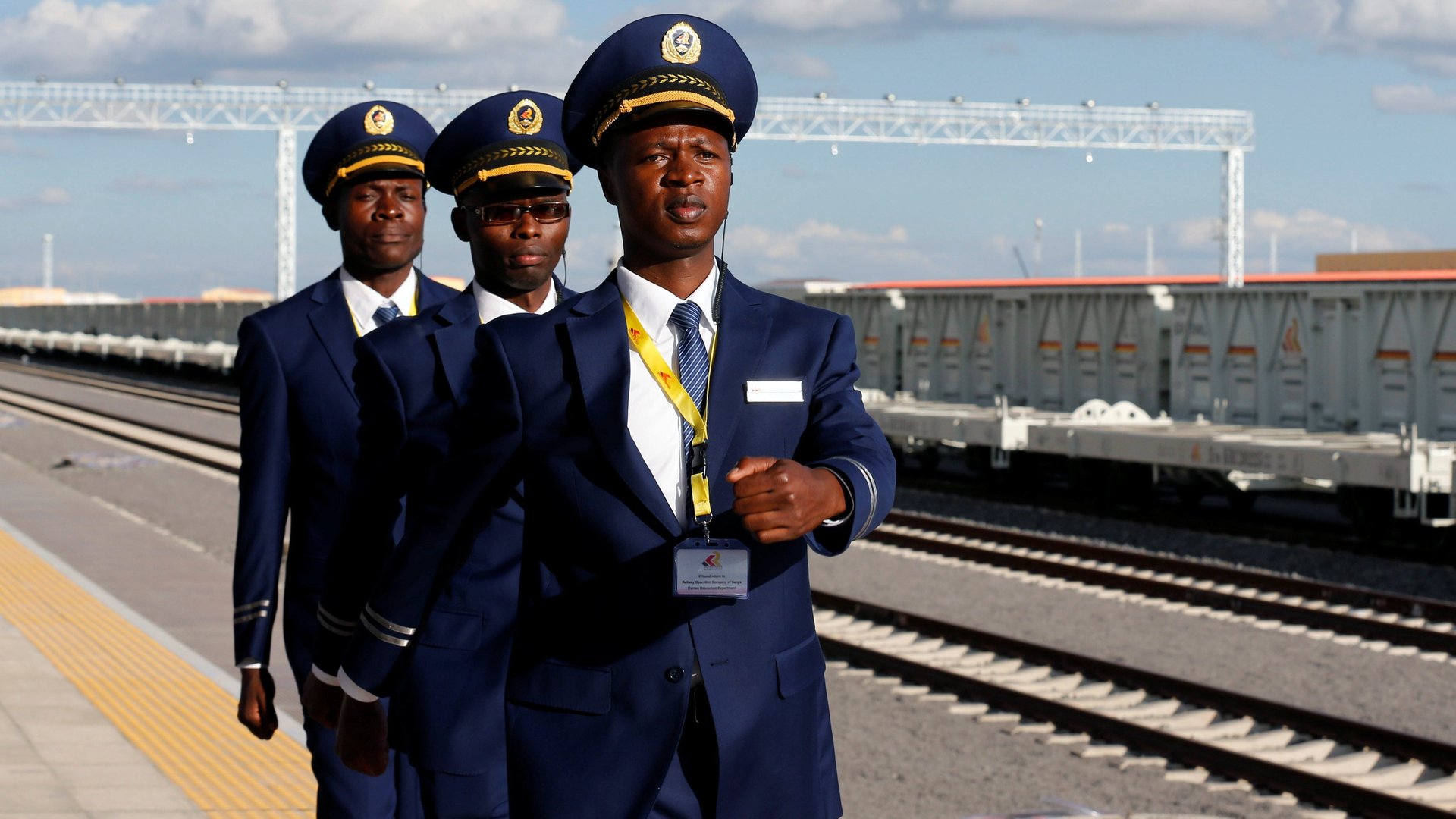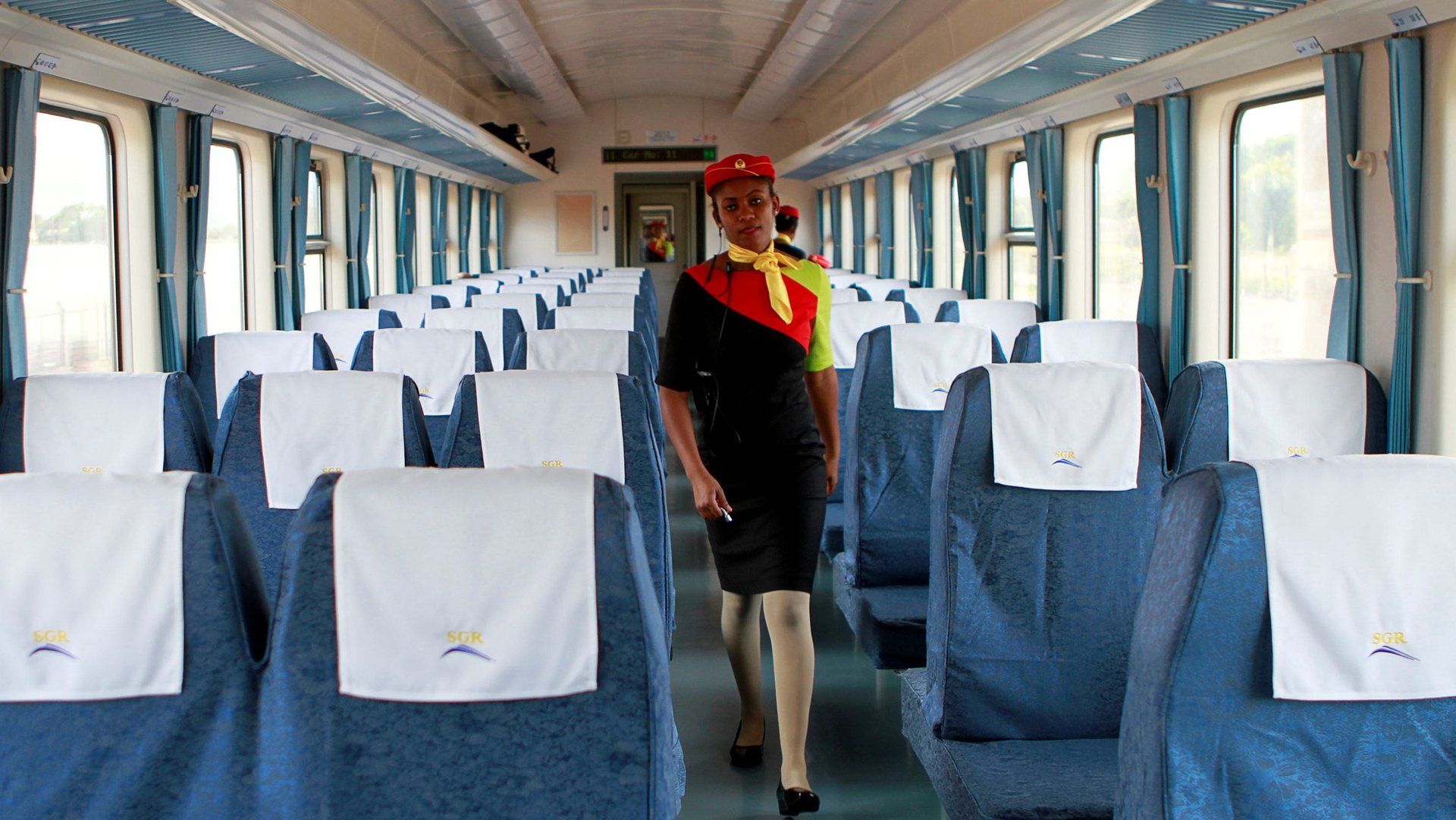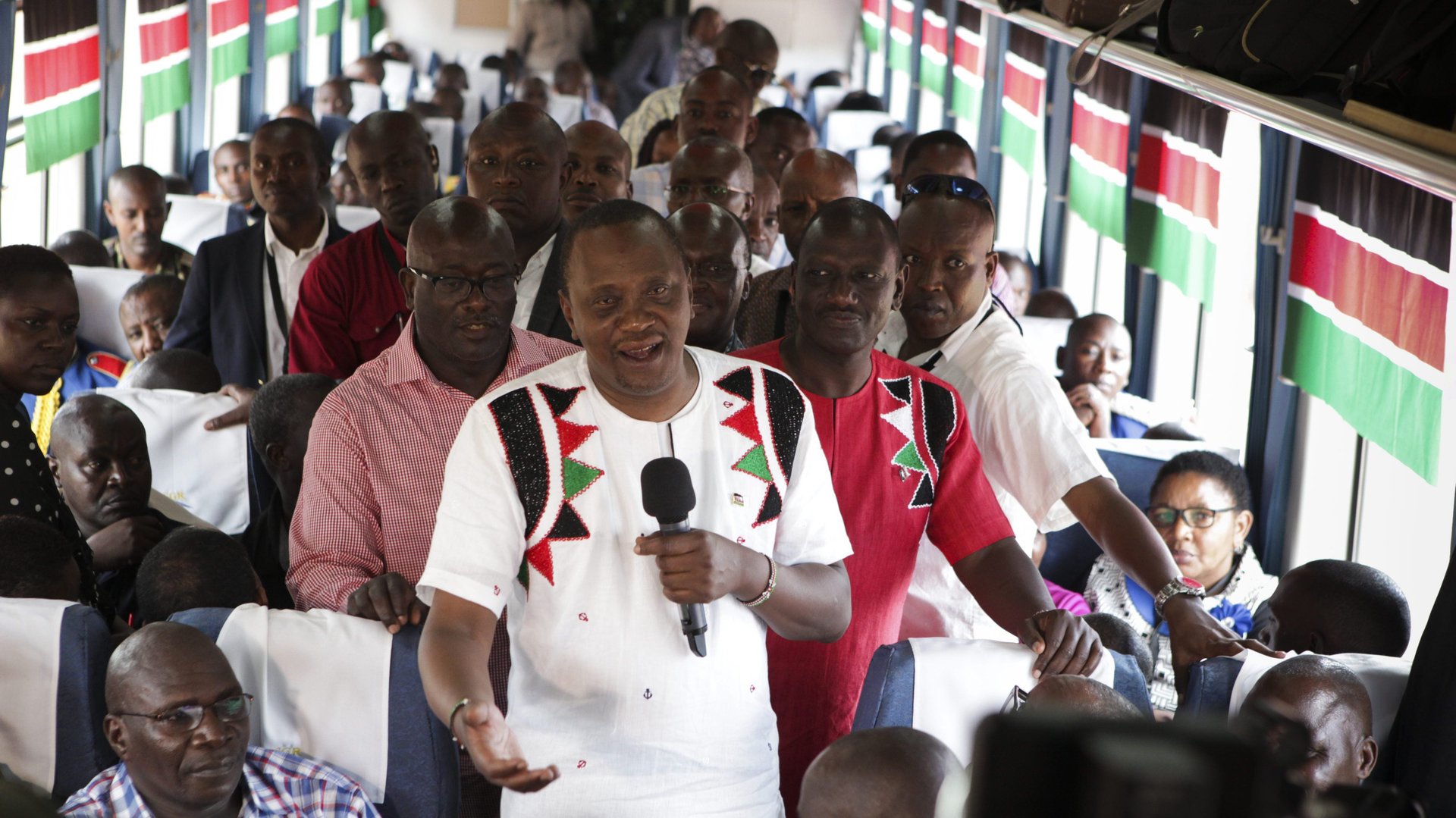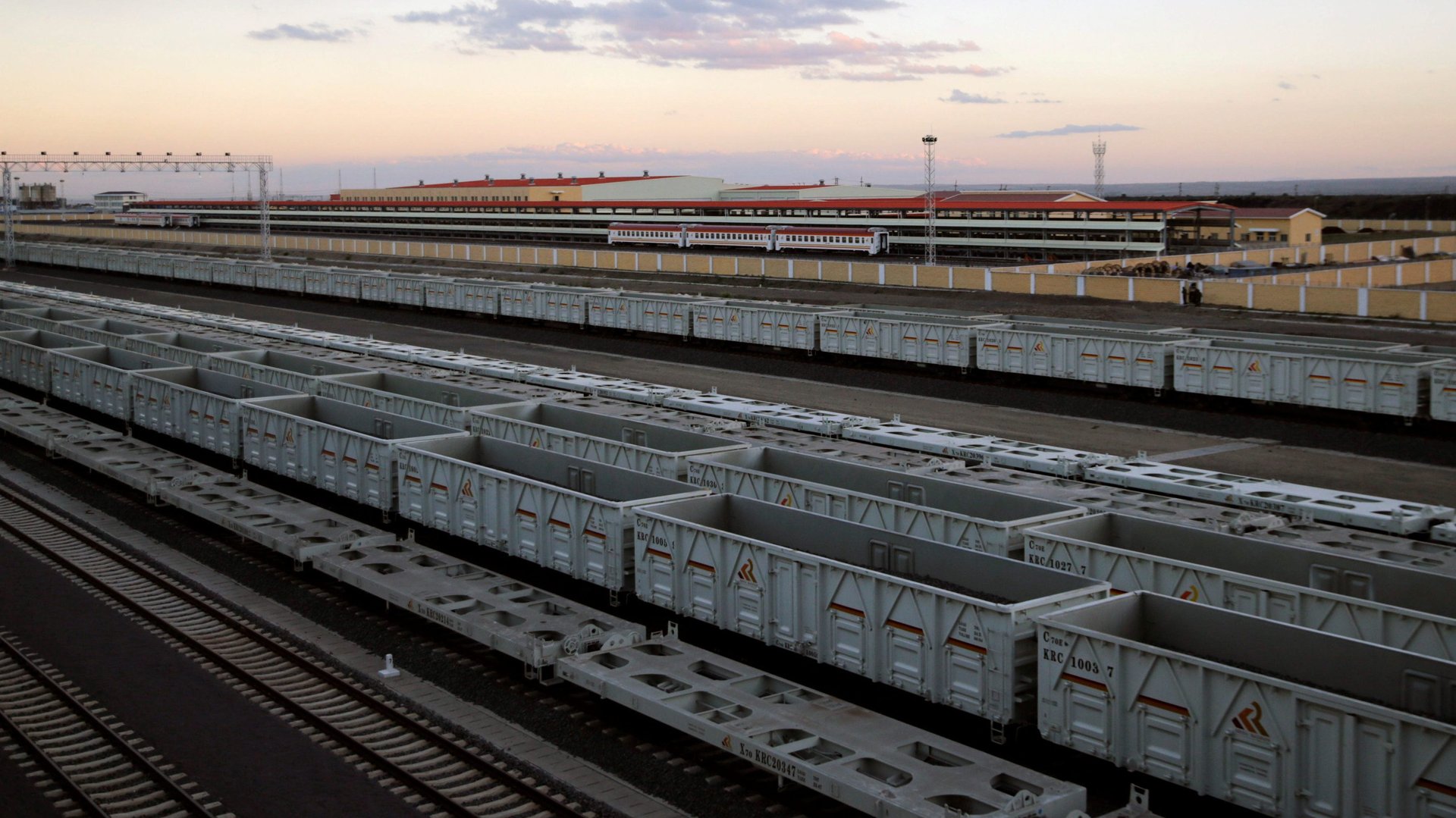Kenya’s $3.2 billion Nairobi-Mombasa rail line opens with help from China
More than a 100 years ago, the British opened the “Lunatic Express,” a 600-mile railway running through Uganda and Kenya, to cement its colonial claims over rival European powers in East Africa. Today, Kenya has replaced that decrepit rail line with a new one, this time built by a new foreign power in the region.
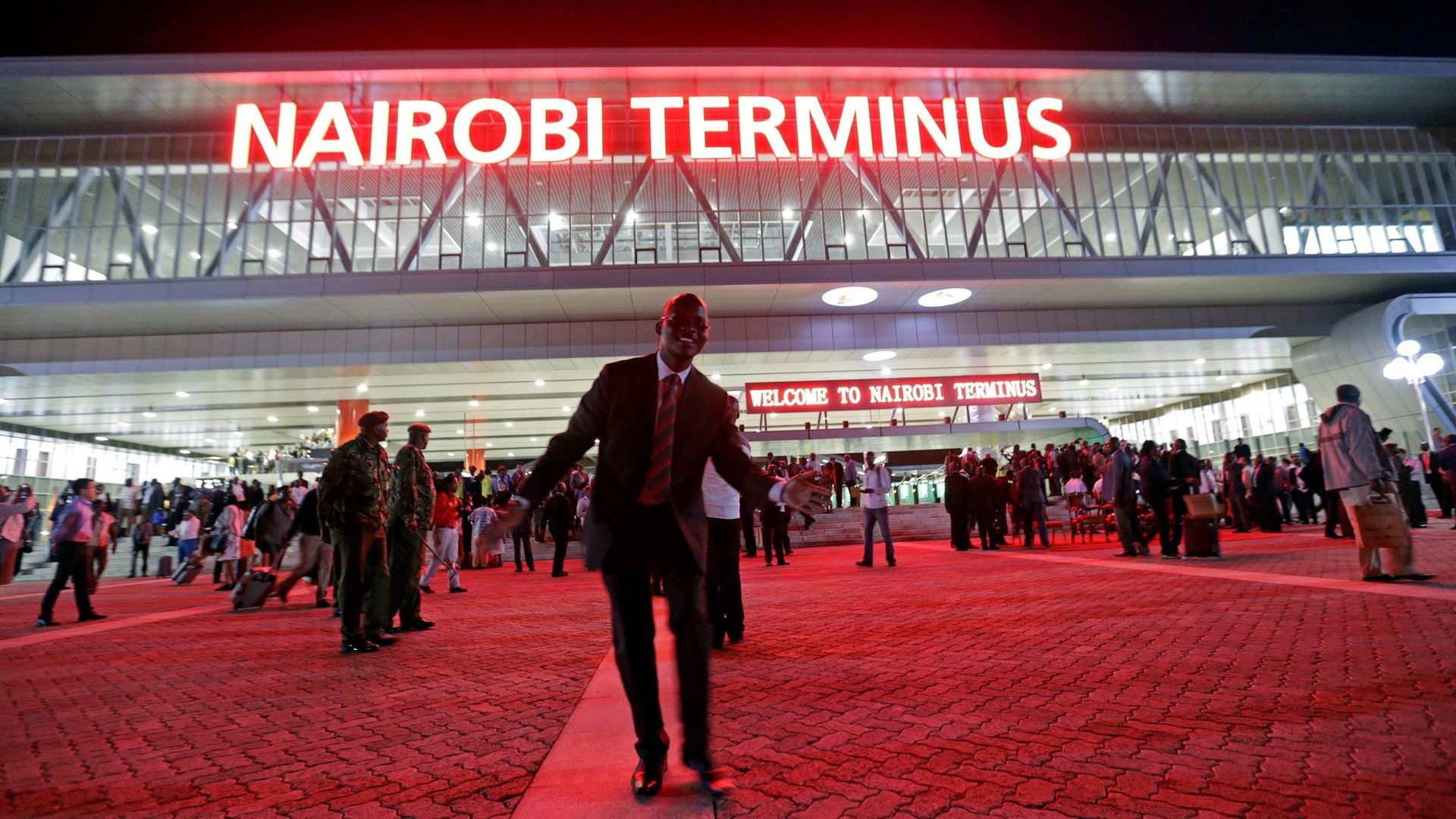

More than a 100 years ago, the British opened the “Lunatic Express,” a 600-mile railway running through Uganda and Kenya, to cement its colonial claims over rival European powers in East Africa. Today, Kenya has replaced that decrepit rail line with a new one, this time built by a new foreign power in the region.
The Standard Gauge Railway (SGR), built and funded by the Chinese, officially opened to the public on Madaraka Day, the anniversary of Kenya gaining the right of self-rule. In a ceremony attended by Kenyan and Chinese officials, a Kenyan orchestra performed Chinese patriotic songs underneath the gaze of a bronze statue of Zheng He, a Chinese admiral who led expeditions to Africa in the 15th century.
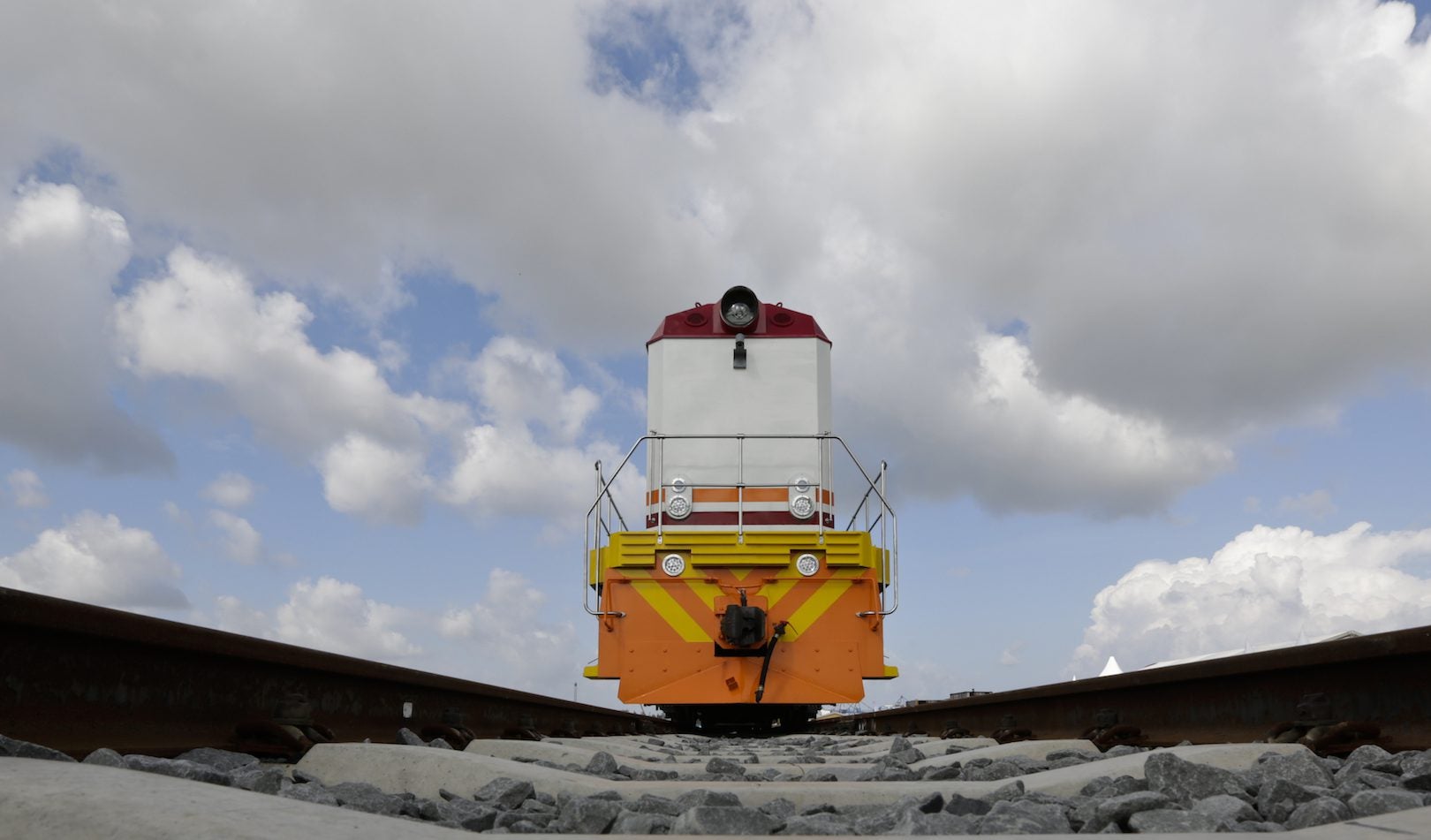
“Today, 122 years later and despite again a lot of criticism, we do not celebrate the Lunatic Express but the Madaraka Express that will begin to reshape the story of Kenya for the next 100 years,” Kenyatta said. ”I want to thank our partner and true friend, China, for the support that has enabled the construction and completion of the project after only two and a half years.”
The ambitions of the SGR are similarly ambitious. The $3.2 billion rail line, the first leg of which connects Kenya’s capital, Nairobi, and the port city of Mombasa, is the country’s largest infrastructure project since independence. Eventually it will extend to Uganda, Rwanda, South Sudan and Ethiopia, placing Kenya at the center of an East African rail network.
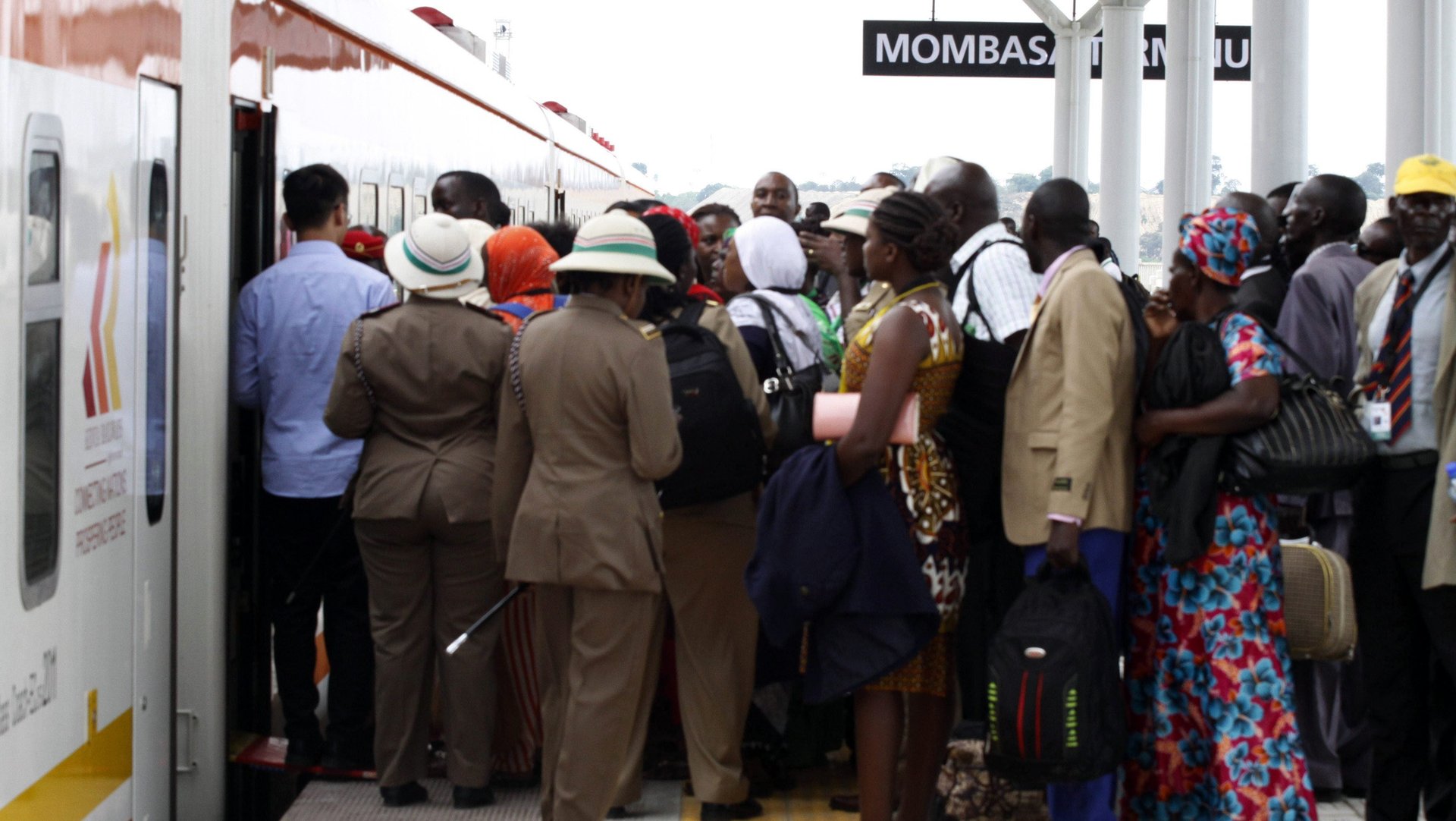
Still, the 470-kilometer (290 miles) rail line has come under criticism for its cost and burden on the country’s public finances—80% of it was funded through concessional loans from China, which already holds over half of Kenya’s external foreign debt. Environmentalists have protested the line’s interruption of Nairobi National Park. Some Kenyans have complained about lack of jobs it created for locals.
Claims circulating social media that the locomotives for the train were second-hand reached such a peak that China’s vice minister for foreign affairs made a statement. “Let me assure you that China never exports second-hand clothes; we never export second-hand cars and it is by no means possible for us to export second-hand locomotives,” he said at a press briefing in Nairobi.
The project signals yet more Chinese engagement in Kenya, which is part of China’s “One Belt, One Road” initiative, to build land and sea transport links across the world. For the first five years, China Communications Construction Company will manage the railway’s operations while training local engineers and staff.
Kenyatta, one of two African leaders who attended an official summit on the initiative in Beijing this month, has gotten another $3.6 billion in funds to extend the line by 250 kilometers (155 miles), between Naivasha in central Kenya and Kisumu in the west.
